Oral
MR Fingerprinting
ISMRM & ISMRT Annual Meeting & Exhibition • 10-15 May 2025 • Honolulu, Hawai'i

| 13:30 |
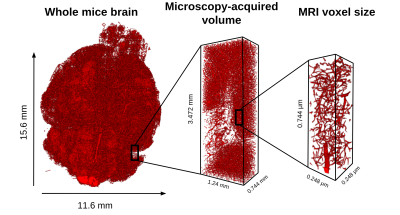 |
0918. Advanced
MR vascular Fingerprinting

M. Marçal, T. Coudert, A. Delphin, A. Barrier, E. L.
Barbier, B. Lemasson, T. Christen
Univ. Grenoble Alpes, INSERM U1216, Grenoble Institut Neurosciences, GIN, Grenoble, France
Impact: By combining realistic 3D voxel generation and
the MRvF technique, we can achieve a detailed depiction of
brain microvascular parameters, potentially improving our
understanding of the brain and treatment of brain lesions.
|
| 13:42 |
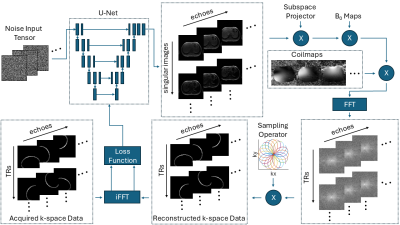 |
0919. Improved
Liver T1, T2, T2*, and PDFF Mapping at 0.55T Using Rosette MRF
with Optimized Sequence Design and Deep Image Reconstruction

T. Griesler, E. Cummings, G. Cruz, M. Davenport, H.
Hussain, J. Hamilton, N. Seiberlich
University of Michigan, Ann Arbor, United States
Impact: Sequence optimization and DIP reconstruction
improved the precision of quantitative liver imaging with
MRF at 0.55T, potentially enabling liver health assessment
in patients who cannot be scanned on higher-field MRI due to
accessibility, implantable device, or body size
restrictions.
|
| 13:54 |
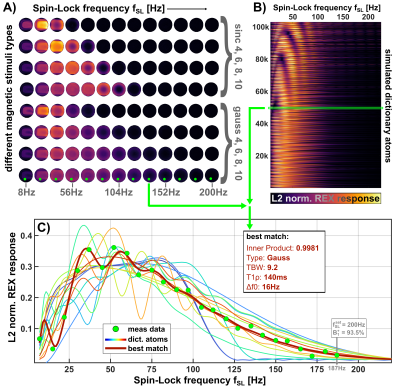 |
0920. Spin-lock
based Magnetic Resonance Fingerprinting enables characterization
of magnetic waveforms via spectral matching of rotary excitation

M. Gram, P. Albertova, T. Griesler, P. Dawood, J.
Stebani, M. Blaimer, N. Seiberlich, P. Jakob, P.
Nordbeck
University Hospital Würzburg , Würzburg , Germany
Impact: This study progresses the research and
understanding of spin-lock-based magnetic field detection.
Magnetic waveforms were characterized by combining concepts
from Magnetic Resonance Fingerprinting and the
rotary-excitation effect. This method could pave the way
for in vivo characterization
of biomagnetic fields.
|
| 14:06 |
 |
0921. Accurate
MRF T2 in structured materials at 0.55T using MT-suppressed
excitations
Z. Zhu, K. Nayak
University of Southern California, Los Angeles, United States
Impact: The use of non-selective RF excitations
substantially reduces MT effects, which mitigates biases in
T2 maps estimated using FISP-MRF. This is essential for the
application of MRF at low field strengths in structured
materials such as white matter.
|
| 14:18 |
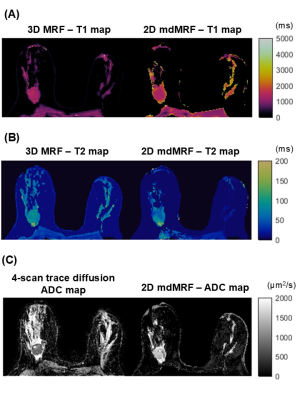 |
0922. Multi-dimensional
MR fingerprinting for combined relaxometry-diffusion parameter
mapping of the breast

S. Moinian, Z. Qiu, Y. Chen, D. Ma
Case Western Reserve University, Cleveland, United States
Impact: We
present the first combined relaxometry-diffusion MR
fingerprinting framework for breast imaging, paving the way
for advancements in predictive breast cancer imaging,
including improved capabilities for prediction of treatment
response.
|
| 14:30 |
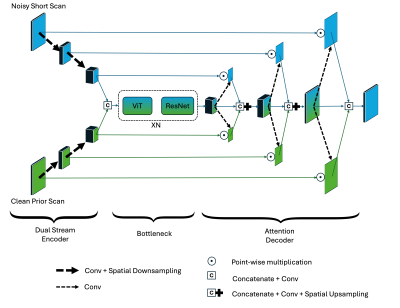 |
0923. Enabling
Rapid Quantitative Multi-Tissue Parameter Mapping for
Longitudinal Studies through Accelerated MRF with Deep
Learning-Based Priors
Y. Urman, Z. Zhou, K. Setsompop
Stanford University, Stanford, United States
Impact: This approach enables significantly shorter MRF
scans in a longitudinal setting without compromising
quality. It should facilitate more frequent monitoring of
patients, particularly hard-to-scan groups like pediatric,
and open avenues for further reducing scan times in
quantitative imaging.
|
| 14:42 |
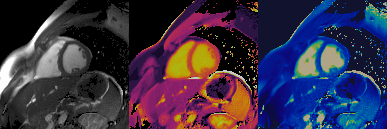 |
0924. Free-running
Cardiac MRF for Simultaneous T1, T2 Mapping and Cine Imaging at
0.55 T

D. Pedraza, C. Castillo-Passi, K. Kunze, R. Botnar, C.
Prieto
Institute for Biological and Biomedical Engineering, Pontificia Universidad Católica de Chile, Santiago, Chile
Impact: A simultaneous acquisition of T1 and T2 maps,
along with cine imaging at 0.55T in a single ~13s scan could
provide a more affordable and accessible approach to assess
cardiovascular disease.
|
| 14:54 |
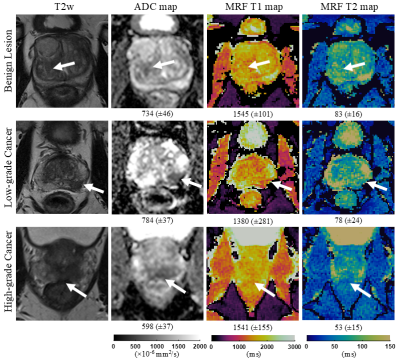 |
0925. Evaluation
of MR Fingerprinting for Prostatic Lesion Characterization in
the Peripheral Zone with Histopathology from MR-TRUS Fusion
Biopsy
Z. Yin, S. Afshari Mirak, D. Futela, C. Flask, L. Kayat
Bittencourt, M. Griswold, S. Tirumani, Y. Chen
Case Western Reserve University, Cleveland, United States
Impact: The results from this study demonstrate the
potential role of magnetic resonance fingerprinting as a
quantitative imaging tool for differentiating clinically
significant prostate cancers to provide critical information
and increase confidence in subsequent biopsy
decision-making.
|
| 15:06 |
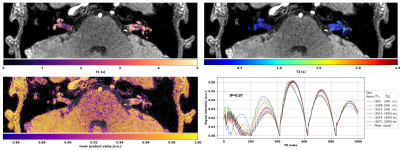 |
0926. High-resolution
quantitative imaging of the inner ear using 3D Magnetic
Resonance Fingerprinting
J. Stebani, I. Angelov, P. Dawood, T. Griesler, P.
Albertova, T. Kampf, K. Rak, P. Jakob, M. Blaimer, M. Gram
University of Würzburg, Würzburg, Germany
Impact: High-resolution 3D imaging of the IE with joint
morphometry and relaxometry as demonstrated in this
preliminary work has the potential to supplant the
collection of existing methods and may help to better
elucidate IE pathologies with non-shape altering,
inflammatory etiologies.
|
| 15:18 |
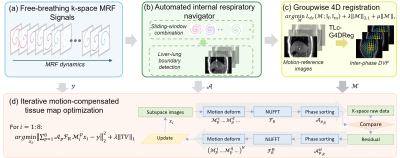 |
0927. High-quality
Four-dimensional Magnetic Resonance Fingerprinting
Reconstruction Using Temporal Low-rank-constrained Motion
Compensation
C. Liu, L. Wang, W. Liao, X. Wang, V-f Lee, P. Cao, T. Li,
J. Cai
The Hong Kong Polytechnic University, Kowloon, Hong Kong
Impact: This study offers a new registration approach
that leverages the temporal low-rank property of respiratory
motion as prior knowledge. This method has the potential to
register extremely under-sampled images groupwisely,
enhancing motion-resolved reconstruction, including but not
limited to 4DMRF reconstruction.
|
The International Society for Magnetic Resonance in Medicine is accredited by the Accreditation Council for Continuing Medical Education to provide continuing medical education for physicians.